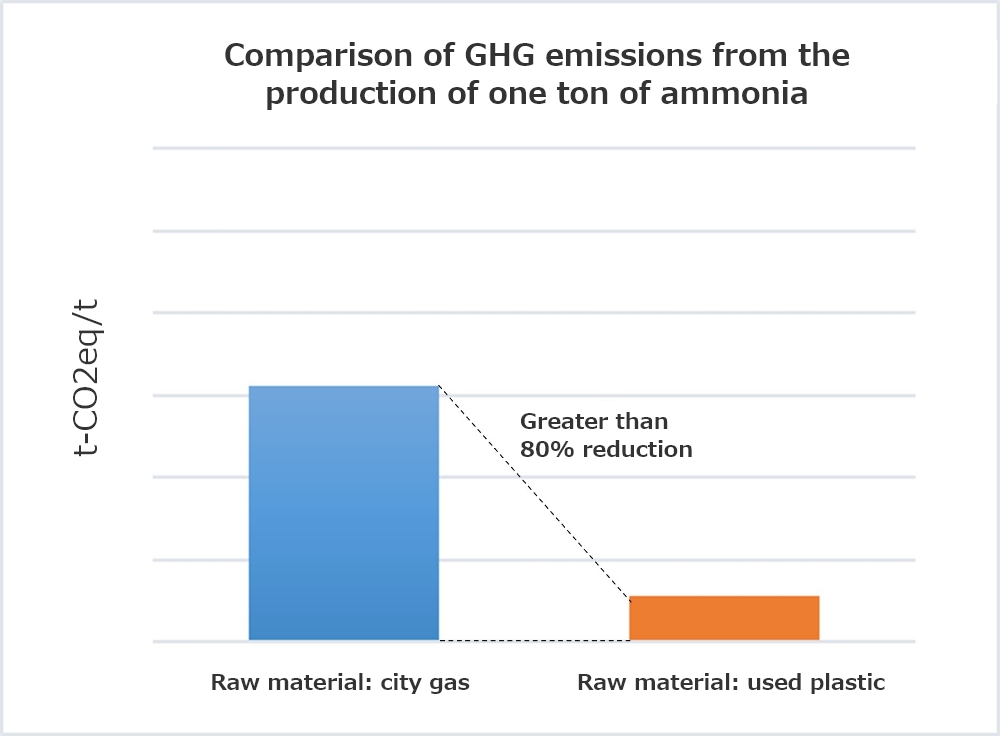Towards Circular Economy
Policies
We work hard to recycle waste and use resources efficiently. To this end, our business and R&D divisions promote their activities by paying attention to the entire product life cycle from product design and development to disposal. Towards a circular economy, we focus on the agendas on the right, while considering setting specific goals and KPIs going forward.
- Design and development: Reduce consumption of minerals, fossil fuels and other resources; Use recyclable materials; Control waste generation; Improve recyclability; Extend product life; Quantify environmental impact of products through the life cycle assessment
- Manufacturing: Minimize consumption of energy, water, and other resources throughout the product life cycle
- Value chain: Pursue co-creation with diverse stakeholders such as suppliers, customers, government agencies, municipalities, and international bodies
Utilization of LCA
Life Cycle Assessment (LCA) is a method for quantitatively evaluating the environmental impact of a product or service over its life cycle.
We have established a system for calculating greenhouse gas emissions for individual products (carbon footprint (CFP) calculation) based on the LCA assessment method. We have also started CFP initiatives in R&D, quantifying and visualizing greenhouse gas emissions from the product development stage for the sake of environmentally-conscious product design.
Examples of initiatives
- Established a CFP initiative system for individual products
- Introduced CFP initiatives at the product development stage in R&D
- Obtained technical guidance from outside LCA experts
- Participated in LCA-related research groups outside the company

Product life cycle
Utilization of LCA (production of low-carbon ammonia from used plastic)
Kawasaki Plant (Kawasaki City, Kanagawa Prefecture, Japan) has confirmed that low-carbon ammonia manufactured from used plastics emits more than 80% less CO2 and other greenhouse gases (GHG) during the manufacturing process compared to ammonia made from fossil fuels. The CO2 emissions calculation process utilized by our company was deemed in compliance with ISO (International Organization for Standardization) standards by a third-party organization (Japan Life Cycle Assessment Facilitation Centre: LCAF), and our low-carbon ammonia manufactured from used plastic is the only such ammonia in Japan to have been verified by a third-party organization as having very high environmental performance.
Contributing to both plastic resource recycling and decarbonization
Ammonia is expected to become a new-age fuel that does not emit CO2 during combustion and to serve as an energy carrier for hydrogen, so demand for ammonia is expected to increase as we move ever closer to creating decarbonized societies. However, a major issue with the conventional manufacturing method using fossil fuels is the large amount of CO2 emitted in the manufacturing process.
In this context, our low-carbon ammonia not only uses used plastic as raw material but also does not use fossil fuels or fossil fuel-derived energy in the manufacturing process, thereby achieving a greater than 80% reduction in CO2 emissions. A third-party organization (Japan Life Cycle Assessment Facilitation Centre: LCAF) has confirmed that our ammonia has excellent environmental performance and can therefore be expected to help bring about recycling-oriented societies and reduce fossil fuel use on the way to establishing decarbonized societies as well.


The world's only gasification chemical recycling plant in long-term stable operation
CO2 is recycled into dry ice and carbonated beverages
Our company began producing ammonia in Japan in 1930 as a raw material for fertilizer, and it has been engaged since 2003 in the plastic chemical recycling business (which we call Kawasaki Plastics Recycling (KPR)), which recycles used plastics into chemical raw materials such as ammonia. In 2015, our ammonia, which utilizes low-carbon hydrogen used in KPR as one of its raw materials, became the first ammonia in the world whose production process received the Eco Mark, since which time we have called it “ECOANN”.
The ammonia with such outstanding environmental performance that has been confirmed to reduce CO2 emissions by over 80% refers to this KPR-derived ammonia.
KPR takes used plastics discharged as waste from homes and businesses as raw materials, gasifies them at high temperatures to break them down to the molecular level, and then extracts hydrogen and CO2 (gasification chemical recycling). The heat exchange rate is 100% because no fossil fuels are used during operation. The hydrogen extracted here is mainly used as a raw material for “ECOANN” low-carbon ammonia, while the CO2 is used as a raw material for dry ice, carbonated beverages, and carbon dioxide gas for medical use by the Group company Resonac Gas Products.
KPR is the only company in the world that has operated a gasification chemical recycling plant stably for nearly 20 years.

Recycling of used plastics into chemical raw materials
KPR achieves cumulative total of one million tons of used plastic recycled, receives numerous awards
Plastic recycling at KPR has reached approximately 200 tons per day, or 60,000 tons per year, attaining a cumulative total of one million tons by January 2022.
Designated since 2015 as a demonstration project for local recycling based on local hydrogen production for local consumption by the Ministry of the Environment, this initiative has been met with great appreciation and expectation as evidenced by the awards it has received, including the Eco Mark Award Silver Prize in 2016 as well as the Global Environment Grand Prize (Japan Business Federation Chairman’s Prize) and the Green Purchasing Grand Prize (Economy, Trade and Industry Minister’s Prize) in 2020.
Aiming to produce ammonia using only plastic derived from used plastics without the use of fossil fuels
We currently produce ammonia using 50% low-carbon hydrogen derived from used plastics and 50% hydrogen derived from fossil fuels (city gas). In future, we intend to produce low-carbon ammonia using 100% used plastics and no fossil fuels at all. We will thereby help reduce the consumption of fossil resources and create a decarbonized society by providing the world's only stable supply of an ecological chemical through the recycling of chemical and plastic resources.

Kawasaki Plastics
Recycling(KPR) Plant
